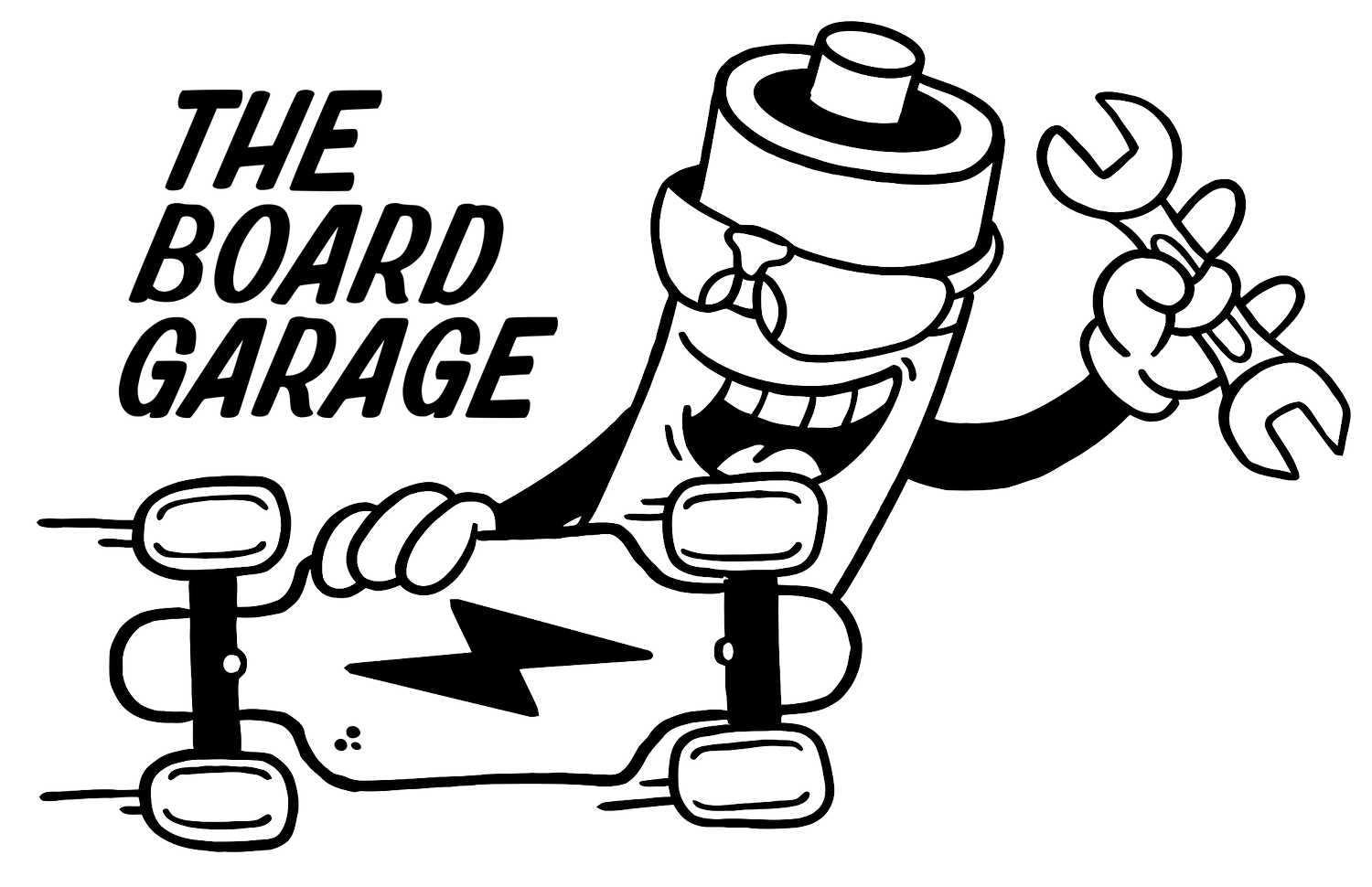GT ME4T Installation Guidance
This write up covers guidance, materials, and desired outcomes for installing the 20s2p (50S cells) pack for the battery enclosure of the Onewheel GT.
THIS BATTERY IS FOR CUSTOM VESC BASED BUILDS OR CONVERSIONS USING THE ONEWHEEL GT PLATFORM. IT IS NOT COMPATIBLE WITH ANY STOCK/OEM ONEWHEEL GT ELECTRONICS.
This battery pack is made to fit with little or no modifications to the battery enclosure. There is, however, a spectrum of variation across these enclosure boxes, and some may require some modification. Most will likely not.
As shown above, the discharge connector on the left and the balance wiring on the right, come into the rear compartment through the openings. There is adequate space for the BMS to sit, along with the wiring.
The image above shows the charge port wiring and the space it enters the enclosure. This port is a 3 pin proprietary plug, and has 3 wires connecting to an MR30 connector. For most charge only BMS options, you only need 2 wires, and would need to change the MR30 to an XT30 Male connector.
YOU WILL HAVE TO EITHER HARVEST THE PROPRIETARY PLUG FROM THE GT CHARGER, OR CHANGE THE CHARGE PORT TO ONE THAT WILL FIT THE PORT HOLE ON THE BOX. THE STOCK GT CHARGERS WILL NOT WORK WITH THIS BATTERY.
The above image shows a nub on the inner surface of the box. It is best to file this off to keep it from digging in to the battery’s side.
A piece of fish/barley paper should be placed here as shown above, as the tightest contact with the pack and the enclosure box is at this area. Every effort was made to keep this area slim and the battery slim fitting, however only during install, will you be able to assess what the fitment in this area will be like.
As shown in the images above, pieces of fish paper should be placed on these corners. The lid of the enclosure has sharp corners, and while they do not contact the battery, and the installation foam should hold the pack in place, it is best to try to get around potential issues.
The above images show the areas on which to apply the padding foam.
The first image shows the 1/8’ thick foam piece applied to the tire-facing side of the pack.
The second image shows the 1/16'“ thick foam piece applied to the BMS-facing side of the pack.
The third image shows the 1/2x1/2” pieces of foam applied to the top side of the pack. On the left, the two pieces should create a channel for the wiring to run, as it enters the cable gland to the box, and heads rearward towards the discharge connector. The same goes for the right side of the pack, where those pieces would create a channel for the charge port wiring heading to the rear where the BMS is.
One of the main goals is to create a compression fit for the battery inside the box, held tightly in place when the lid is shut. This is what will keep the battery pack from vibrating around. Vibration and impact is generally bad, and so every effort should be taken to ensure that the pack is held securely in place.
If this means that more foam padding above the battery is needed, then you will have to assess that, and accommodate accordingly.







